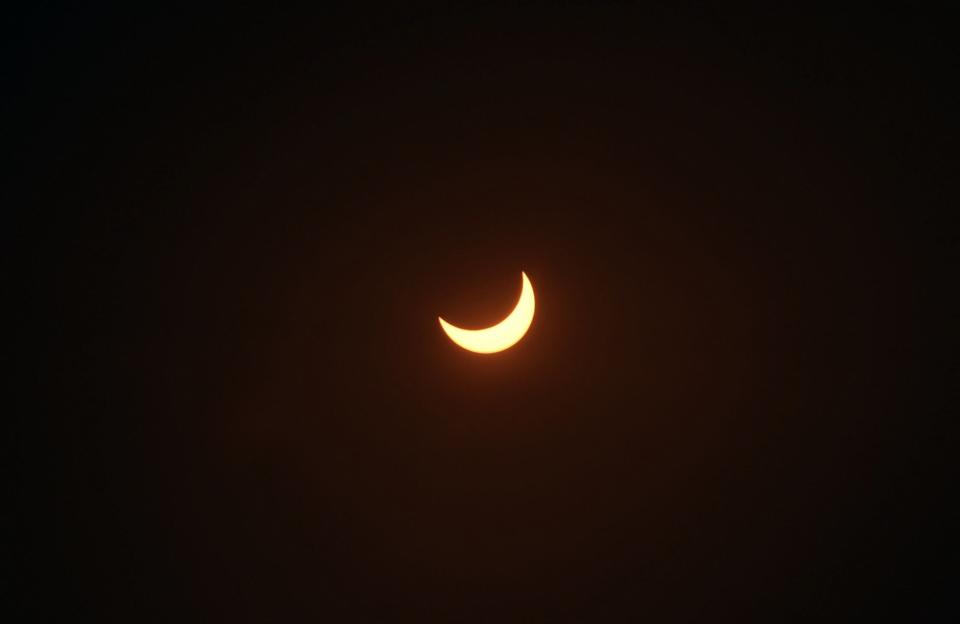A Rare Black Moon Is Going to Coincide With Tomorrow's Solar Eclipse — How to See It

Mariano Gabriel Sanchez/Anadolu Agency via Getty Images
There's an extremely rare celestial event happening Saturday night, and you won't want to miss it.
Ever hear of a Black Moon? Though it's not an official astronomy term, a Black Moon is when there's a second new moon in a calendar month — you can consider it the companion to a Blue Moon, which is a second full moon in a calendar month.
A rare occurrence that only happens roughly every 29 months, two alternative definitions of Black Moons, according to Timeanddate.com, include when there's no new moon in the month of February and when there are four new moons in a season — the Black Moon is the third new moon in that sequence. Since a new moon occurs when the sun illuminates the far side of the moon rather than the Earth-facing side, you can't actually see a new moon from Earth — meaning astronomy enthusiasts won't technically be able to see Saturday's Black Moon either.
However, there's a second part to the celestial event that will make the Black Moon partially visible in some regions of the world.
Saturday's Black Moon happens to coincide with a partial solar eclipse — an exceptionally rare combination. Solar eclipses occur when the moon travels between Earth and the sun, casting its shadow onto the surface of the Earth — a total solar eclipse means that the entirety of the sun will be blocked by the moon, whereas a partial one means just a slice of it will be covered.
So while you normally are not able to see a Black Moon, you'll be able to catch a glimpse of it as the moon passes in front of the sun. (Always remember to wear solar eclipse glasses if you're going to look at the sun!)
There's a bit of bad news, however. The partial solar eclipse is only visible from a small part of the world, and it happens to be a pretty remote one. The eclipse will begin near the coast of Antarctica, moving across the southern portion of South America before disappearing — that will all happen between 2:45 p.m. EDT and 6:37 p.m. EDT.
Fortunately, it seems as if there will be at least one live stream of the event — India-based YouTube channel Gyann ki gareebi will broadcast it starting at 1:45 p.m. EDT, according to Space.com. So unless you happen to be based in South America (and you have clear skies!), that's your best chance at witnessing this rare Black Moon–solar eclipse event.

